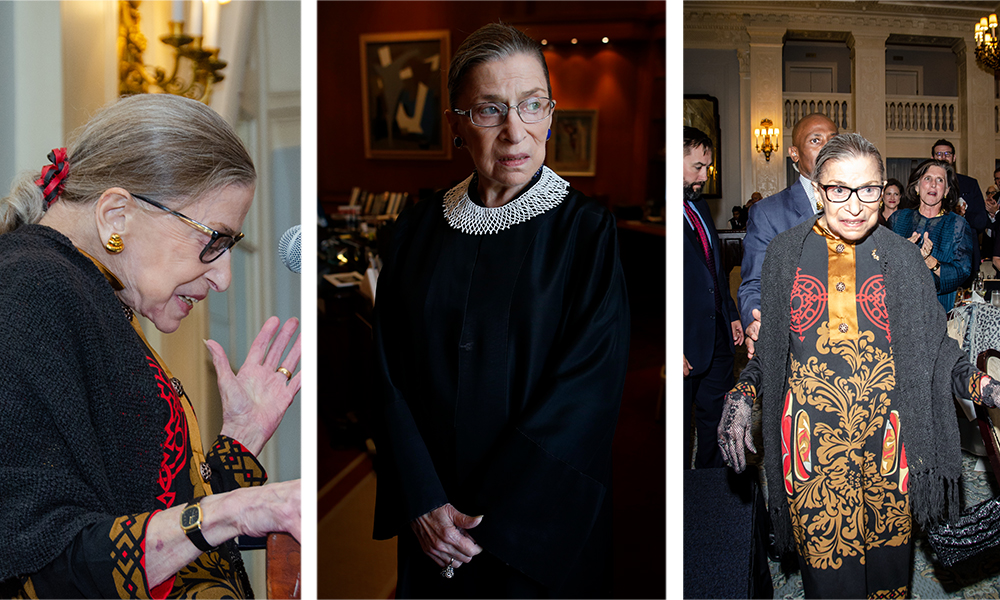Earlier this month I asked Justice Ginsburg if she thought society was advancing or regressing as part of an upcoming Moment symposium on the question. Her first response was that she would not be able to answer this question until after the election. She would, however, specifically talk about the status of women. Her answer, published for the first time, is below. We are sharing it because despite the turmoil that surely lies ahead, we can’t lose sight of what we—with her help—have accomplished. —Nadine Epstein
Upon the ratification of the 19th Amendment in 1920, women gained the right to vote. Generous interpretation of the suffrage amendment might have opened doors to equal rights and opportunities in other respects. But that did not happen. Instead, federal and state legislatures and courts read the amendment restrictively to extend the franchise to women, and nothing more. So, among other differentials that persisted, women could be left off jury rolls, prohibited from engaging in certain occupations—bartending, policing, firefighting, for example. But in the 1970s, the U.S. Supreme Court turned in a new direction. It commenced to hold unconstitutional laws that treated women as separate from, and subordinate to, men—occupants of a confined place in the larger world reserved for men.
In truth, the court was catching up to changes in the way people conducted their lives. Changes in the composition of the legal profession are illustrative.
When I entered law school in 1956, women were only 3 percent of the lawyers in the United States. No women were on the faculty of the law schools I attended; only one woman had ever served on a U.S. federal appellate court. Today, about half the nation’s law students are women, one-quarter of our federal judges are women, including three of the nine justices composing the U.S. Supreme Court bench. Women fill some 20 percent of U.S. law school deanships and serve as general counsel to more than 20 percent of Fortune 500 companies.
My dear colleague, the first woman on the Supreme Court of the United States, Sandra Day O’Connor, explained the significance of the newly opened doors this way:
“For both men and women, the first step in getting power is to become visible to others, and then to put on an impressive show…As women achieve power, the barriers will fall. As society sees what women can do, as women see what women can do, there will be more women out there doing things, and we’ll all be better off for it.”
Despite the considerable progress, a daunting distance remains to be traveled.
Yet, despite the considerable progress, a daunting distance remains to be traveled. Most people in poverty in the U.S. are women and children, women’s earnings are still notably less than the earnings of men with comparable education and experience, our workplaces do not adequately accommodate the demands of childbearing and childrearing, and we have yet to devise effective ways to ward off sexual harassment at work and domestic violence in our homes.
While I am mindful of current realities, the opening of doors long closed makes me optimistic about a future in which daughters and sons alike will be free from artificial barriers, free to aspire and achieve in full accord with their God-given talents and their willingness to do the hard work needed to make dreams come true.
To read more from and about Ruth Bader Ginsburg, click here.
To hear RBG’s interview with NPR legal affairs correspondent Nina Totenberg at Moment‘s 2019 New York dinner, click here.

